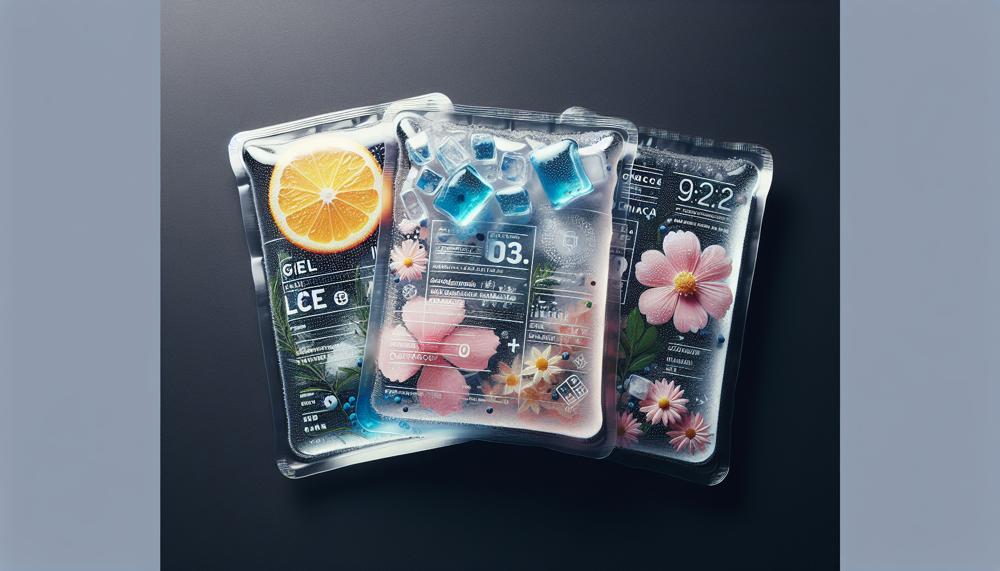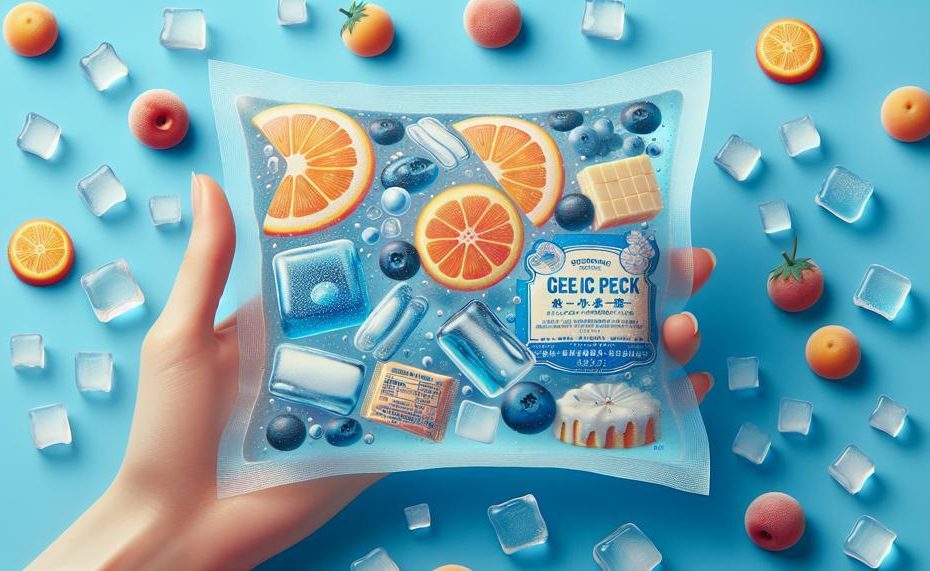Do you ever open your freezer to find a pile of old, leaky gel ice packs? Or do you worry about the environmental consequences of throwing them in the trash? Well, fret no more. In this blog post, we’ll delve into the world of safely disposing gel ice packs.
We’ll cover everything from why it’s important to how you can do it in an eco-friendly way.
So sit back, relax with a cup of coffee, and let’s get started on our journey towards a cleaner planet.
- Gel ice packs have various uses such as treating injuries, keeping food cold on picnics, and shipping perishable items.
- Disposing of them improperly can harm wildlife and contaminate water sources.
- Unfortunately, most gel ice packs cannot be recycled due to their plastic lining.
- But don’t lose hope. Some companies have recycling programs specifically for their brand of gel ice pack.
- If you want to go the extra mile for the environment, consider using reusable ice packs or making your own with natural ingredients.
- Properly disposing of gel ice packs not only benefits the environment but also prevents them from ending up in landfills or oceans.
So let’s bid farewell to those troublesome old gel ice packs and say hello to a greener planet.
Contents
- 1 How To Dispose Of Gel Ice Packs Safely?
- 2 The Importance of Proper Disposal for Gel Ice Packs
- 3 Recycling Gel Ice Packs: How to Do It Safely and Effectively
- 4 Alternative Options for Disposing of Gel Ice Packs
- 5 Reusing Gel Ice Packs: A Sustainable Solution
- 6 Things to Avoid When Disposing of Gel Ice Packs
- 7 The Impact of Improper Disposal on the Environment and Health
- 8 Conclusion
How To Dispose Of Gel Ice Packs Safely?
When it comes to disposing of gel ice packs, following specific steps is crucial to ensure safety for both people and the environment.
These steps include understanding the composition of gel ice packs. Research recycling programs or specialized companies. Reuse the ice packs. Properly dispose of them in the trash. However, it’s important to note that precautions should also be taken when handling and disposing of these packs.
- Firstly, it’s crucial to understand the composition of gel ice packs. These packs typically contain a mixture of water and a polymer that allows them to retain a cold temperature for extended periods. This composition makes them unsuitable for disposal in sinks or toilets as it can cause clogs and damage to plumbing systems.
- Secondly, researching recycling programs or specialized companies is essential when disposing of gel ice packs. Many local waste management agencies offer recycling options for gel ice packs, while some companies specialize in the proper disposal of these packs. This is important as improperly disposing of these packs can harm the environment.
- Thirdly, whenever possible, reusing gel ice packs is highly recommended. This not only reduces waste but also saves money. Simply keep the pack in your freezer until it’s needed again or use it as an ice pack for minor injuries.
- Lastly, properly disposing of gel ice packs in the trash is vital to ensure they are handled correctly. However, it’s crucial to take certain precautions when handling them. Always wash your hands after handling them, avoid any contact with leaked gel or broken plastic casings, and keep them out of reach from children and pets.
The Importance of Proper Disposal for Gel Ice Packs
It is of utmost importance to dispose of gel ice packs correctly due to several reasons. The consequences of improper disposal can have a negative impact on the environment.
Many gel ice packs contain harmful chemicals. If not disposed of properly, these chemicals can seep into the soil and water. This can harm plants, animals, and humans who touch contaminated resources.
Moreover, gel ice packs take up significant space in landfills. Landfills are already overloaded with waste. Proper disposal of gel ice packs can help reduce waste in landfills. It can also contribute to a cleaner and healthier environment.
Another crucial reason for proper disposal is for safety purposes. Gel ice packs may contain substances like refrigerant gel. These can be harmful if ingested or come into contact with skin or eyes. By correctly disposing of them, we can minimize the risk of accidents. We can also protect ourselves and others from potential harm.
Also, proper disposal ensures these items are recycled or repurposed, not sent to a landfill. This not only reduces waste but also conserves resources by reusing materials.
Recycling Gel Ice Packs: How to Do It Safely and Effectively
Recycling gel ice packs is an effortless and efficient way to reduce waste and safeguard the environment. Here are the necessary steps to recycle gel ice packs safely and effectively:
- Check the compostability of the gel ice pack: Some gel ice packs are constructed from biodegradable materials and can be disposed of safely in a compost bin. Verify the packaging or consult the manufacturer to confirm if your gel ice pack can be composted.
- Drain the gel: Before recycling, it is crucial to drain the gel from the pack. This can be accomplished by placing the pack in a sink or tub and allowing it to defrost. Once the gel turns into a liquid, drain it into a container or directly onto the ground (if it is non-toxic) and wipe out any remaining residue.
- Clean the plastic casing: If the ice pack is made of a flexible plastic casing, it can be recycled. However, it must be clean and free of any leftover gel or residue. Rinse the casing with warm water and soap, then dry it thoroughly.
- Separate plastic and gel: If your ice pack has a separate plastic casing and gel filling, make sure to separate them before recycling. The plastic casing can be recycled with other plastics, while the gel must be disposed of properly.
- Recycle or dispose of properly: Once your gel ice pack is clean and separated, it can be recycled with other plastics or disposed of in the regular trash depending on your local waste management guidelines.
Alternative Options for Disposing of Gel Ice Packs
Here are some alternative options for disposing of them in an environmentally-friendly way.
-
- Composting: If the gel ice pack is labeled as compostable, you can toss it into your compost bin without any worries. This not only reduces waste but also provides nutrients for your garden. A win-win situation.
- Regular Trash: If your gel ice pack is not compostable, you can dispose of it in the regular trash. However, be sure to check with your local guidelines as some places may have restrictions on disposing of gel-based products.
- Recycling: Did you know that most gel ice packs can be recycled? As long as they are clean and the gel has been drained out, you can recycle them at your local recycling center. Just make sure to check if they accept plastic film and follow their instructions for proper recycling.
- Reuse: Instead of throwing away your gel ice packs after one use, why not reuse them for other purposes? They make great cold compresses for injuries or can keep your food and drinks cool during a picnic. Get creative.

- Donate: Have unused gel ice packs lying around? Consider donating them to someone who may need them. Hospitals, food banks, or shelters may accept donations of gel ice packs for medical or cooling purposes.
Reusing Gel Ice Packs: A Sustainable Solution
Reusing gel ice packs is an eco-friendly solution. It not only cuts down on waste but also promotes an environmentally conscious lifestyle.
By reusing gel ice packs, you can reduce your carbon footprint and minimize the amount of waste ending up in landfills. Let’s explore how reusing gel ice packs can have a positive impact on the environment.
| A Cost-effective Option | Less Waste Ending Up in Landfills | Energy and Resource Conservation |
| Supporting Sustainable Production | Versatile Use for Multiple Purposes | Minimal Impact on the Environment |
- A Cost-effective Option: Buying gel ice packs can be expensive, especially if you need them frequently for injuries or to keep food cool. By reusing them, you are saving money and reducing the need for constant purchases.
- Less Waste Ending Up in Landfills: Gel ice packs are often made with non-biodegradable materials like plastic, which can take hundreds of years to decompose in landfills. By reusing them, you are preventing them from adding to environmental pollution.
- Energy and Resource Conservation: Making homemade gel ice packs requires minimal resources and energy compared to producing and transporting store-bought ones. By reusing them, you are conserving energy and resources that would have been used in the production process.
- Supporting Sustainable Production: Reusing gel ice packs also supports sustainable production practices. Making homemade gel ice packs with simple ingredients reduces the need for factories that produce plastic products, which contribute to air and water pollution.
- Versatile Use for Multiple Purposes: Gel ice packs can serve various purposes beyond just soothing injuries or keeping food cold. They can also be used as cold compresses for headaches or muscle aches, and even as makeshift ice packs for coolers during outdoor activities.
- Minimal Impact on the Environment: Reusing gel ice packs has a minimal impact on the environment compared to other disposal methods like recycling or composting. By reusing them, you are extending their lifespan and reducing the need for new ones to be produced.
Things to Avoid When Disposing of Gel Ice Packs
| Throwing gel ice packs in with regular trash | Rather, it is important to follow the disposal instructions on the packaging or label, or conduct research to determine the appropriate disposal methods. |
| Cutting open gel ice packs before disposing of them | This can release hazardous chemicals into the environment, posing a threat to both humans and animals. Always empty the gel and dispose of the plastic packaging properly. |
| Attempting to reuse gel ice packs | It is important to note that these packs are designed for single-use only and cannot be safely reused. Doing so can lead to bacterial growth and contamination. |
To avoid these common mistakes, always check the packaging or label for specific disposal instructions. It is imperative. In cases where no instructions are provided, the safest way to dispose of gel ice packs is by emptying the gel into a sink or toilet. Then, dispose of the plastic packaging properly.
The Impact of Improper Disposal on the Environment and Health
Improperly disposing of gel ice packs can have grave consequences on the environment and our well-being. These packs contain hazardous chemicals. The chemicals can pollute soil and water, harm wildlife, and contribute to pollution. Moreover, they pose a physical threat to humans if accidentally exposed to the chemicals. Hence, it is vital to properly dispose of gel ice packs to reduce their impact on the environment and our health.
Properly disposing of gel ice packs is crucial for preserving the health of our environment and ourselves. These packs are filled with toxic chemicals. They can contaminate the soil and water, harming the delicate balance of our ecosystem. Additionally, they can also cause harm to humans if exposed unintentionally. Therefore, it is essential to dispose of gel ice packs responsibly to mitigate their impact on our surroundings and well-being.
Conclusion
In summary, the safe disposal of gel ice packs is essential for the well-being of both our planet and ourselves.
These packs contain chemicals that can be harmful to the environment and human health if not properly disposed of. We can reduce their negative impact on our surroundings. We can do this by familiarizing ourselves with their composition. We can explore recycling options and reuse them when feasible. We should also take necessary precautions when handling them.
Furthermore, alternative solutions can also play a role in promoting a more sustainable future. For example, composting or donating unused gel ice packs.





